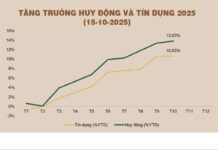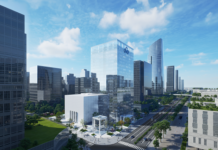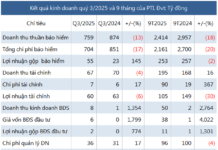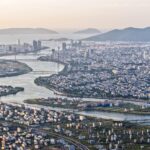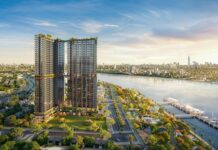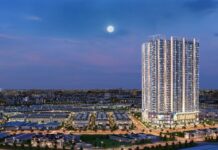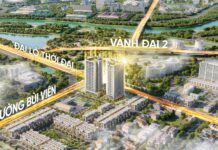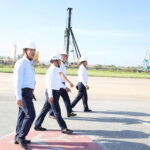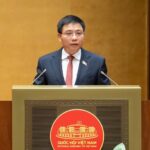In recent years, the rapid development of the northern transportation system, particularly ring roads, highways, and metro networks, along with regional infrastructure investments, has paved the way for a shift in urban centers to satellite provinces surrounding Hanoi.
According to urban planning experts, the formation of satellite city chains around the capital is an inevitable trend in the national urban development process. Bac Ninh, strategically located within the Hanoi – Hai Phong – Quang Ninh economic triangle and boasting a robust industrial foundation, is emerging as a new growth hub. It not only alleviates population pressure on the capital but also attracts significant investment and high-quality residents.
Coupled with the rise of large-scale, well-planned urban complexes featuring complete transportation infrastructure and synchronized amenities, these areas not only meet housing needs but also hold immense growth potential due to sustainable urban planning.
These factors have made satellite urban areas increasingly attractive, reshaping the future residential landscape. Among them, Bac Ninh has emerged as a “golden destination” undergoing a remarkable transformation.
The Planning Catalyst of a Future Centrally-Governed City
In 2024, Hanoi and its eight neighboring provinces attracted $12 billion in FDI, nearly one-third of the country’s total registered capital. Bac Ninh (former) and Bac Giang (former) were investment hotspots, also drawing a net influx of migrants.
The merger of Bac Ninh and Bac Giang provinces created a “super metropolis” with a population of approximately 3.5 million. This is not merely an administrative change but a gateway to unprecedented development for the northern key economic and industrial hub.
Under the 2021-2030 Bac Ninh Provincial Plan, with a vision to 2050, the goal is for Bac Ninh to become a centrally-governed city by 2030. It aims to be a strategic national development area and a dynamic economic and cultural center in the North, modeled as a “Smart City – Industrial – Service – Cultural Hub.”
Bac Ninh currently leads the nation in FDI attraction, hosting giants like Samsung, Canon, Foxconn, Hana Micron, and JA Solar. Hundreds of thousands of technical workers, experts, and foreign managers have flocked to the area, creating massive demand for high-quality housing and urban services.
A notable highlight is Bac Ninh’s construction of seven major universities, expected to accommodate tens of thousands of students annually. This large-scale academic community will generate substantial demand for housing, daily services, and entertainment, ensuring sustained demand in the urban real estate and luxury housing market.
Alongside its industrial strength, the region’s infrastructure is being developed synchronously, with seamless connectivity. Key projects like the Hanoi – Bac Ninh – Lang Son Expressway, Noi Bai – Ha Long Expressway, Ring Road 4, Gia Binh Airport, inter-provincial metro, and international rail lines (Dong Dang – Hanoi and Lao Cai – Hanoi) will propel the new industrial zone’s growth, shaping a model industrial city in the near future.
The Heat of the Prosperity Junction
Given these factors, experts agree that Bac Ninh will be the focal point of satellite urban real estate in the coming years, particularly the new central area – the six-way intersection of the new Bac Ninh Provincial Administrative Center.
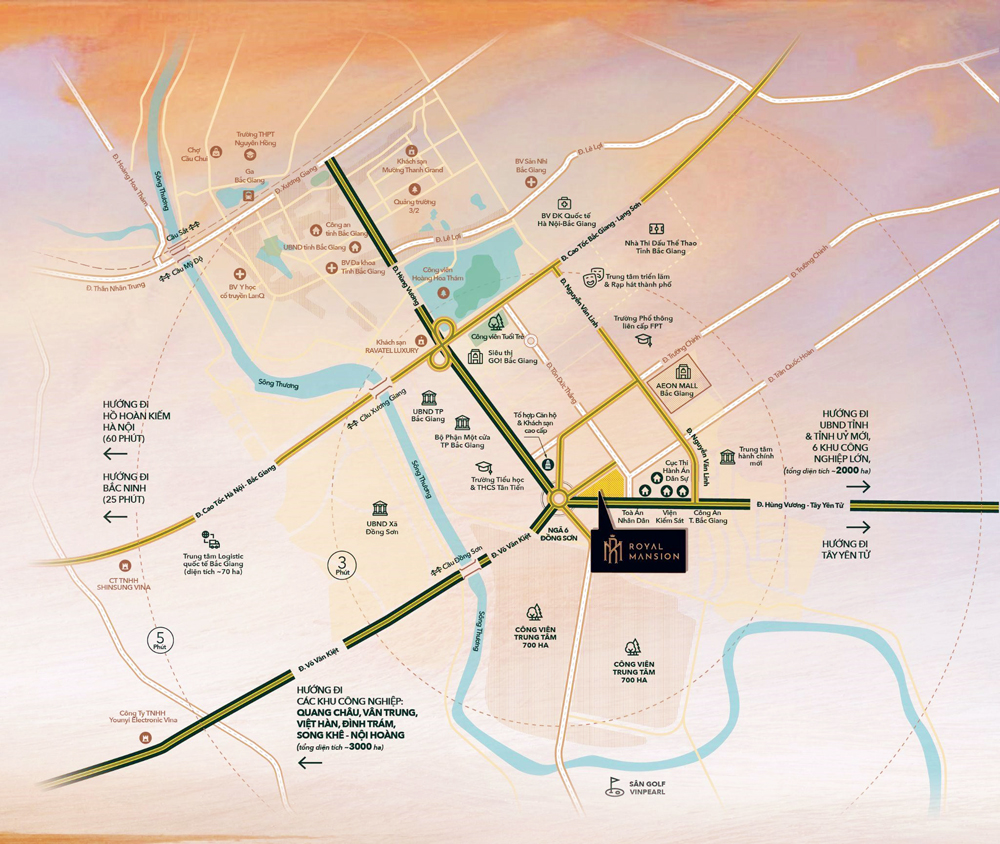
The six-way intersection – a hub connecting transportation, commerce, and administration in Bac Ninh Province.
Strategically positioned, the new Bac Ninh Provincial Administrative Center intersection is envisioned as the economic, political, cultural, and entertainment hub of the province. It borders the 3,000-hectare Southern Industrial Zone, a newly planned 3,789-hectare industrial zone, residential areas, the new administrative center, international amenities, a 700-hectare central park, Vinpearl Golf Course, and provincial departments.
The prime land around the intersection is earmarked for iconic projects, luxury residential complexes, commercial centers, hotels, and provincial landmarks such as the Royal Mansion high-end entertainment urban complex, Thien An Central, and major facilities like a central square, general hospital, and supermarkets.
The unique architectural space, with modern planning and construction, has made this new administrative center one of the most vibrant six-way intersections, offering exceptional value appreciation potential. Investors view it as an attractive haven for capital in the upcoming period.
From a dynamic industrial hub to a thriving metropolis, Bac Ninh is solidifying its position as the new “capital” of the North, a convergence of knowledge, prosperity, and cultural identity in the era of smart urbanization.
Sustainable Urban Development: Building Climate-Resilient Green Cities
Amidst escalating annual damages from storms, floods, saltwater intrusion, and landslides, many existing infrastructure systems are proving inadequate. Consequently, investing in resilient urban infrastructure has become an urgent imperative.
Southern Investment Wave: Northern Wealth Shifts Focus to Prime Southern Markets for High-Yield Opportunities
Hanoi’s property prices continue to soar, narrowing the margin for price increases and diminishing their appeal to investors. Meanwhile, the more reasonable price levels and vast growth potential in the South are prompting many Northern investors to redirect their capital southward.






